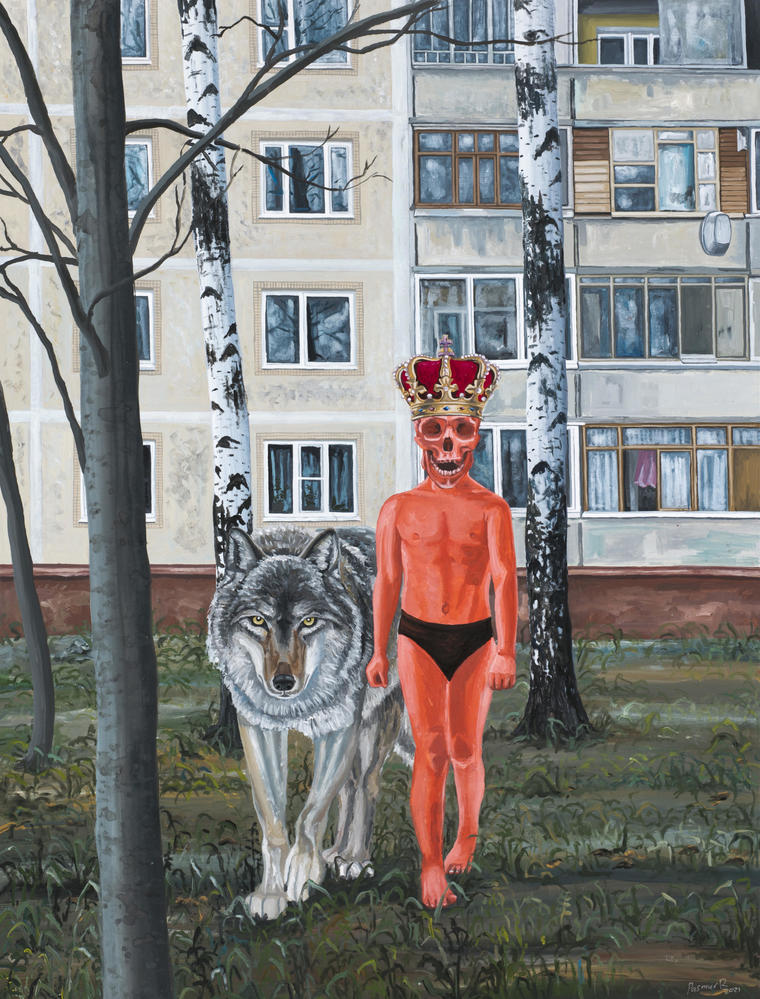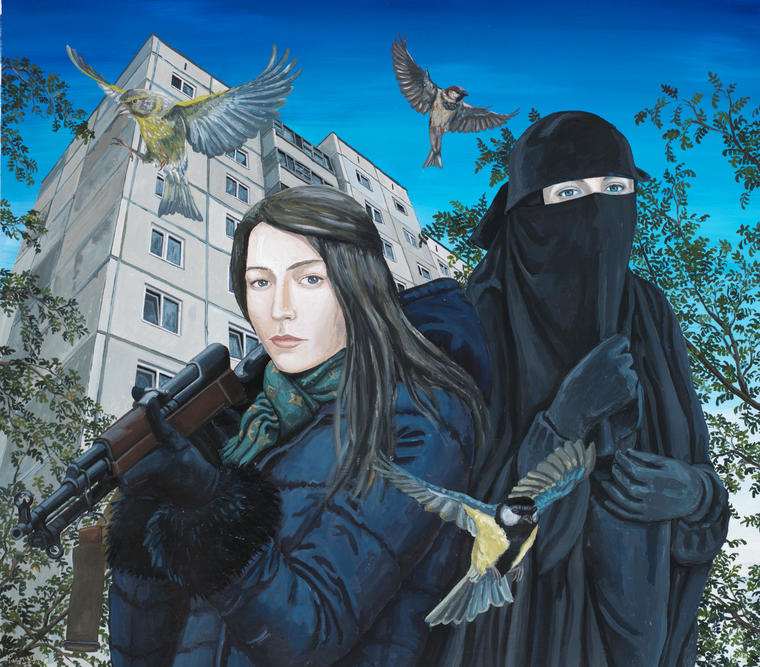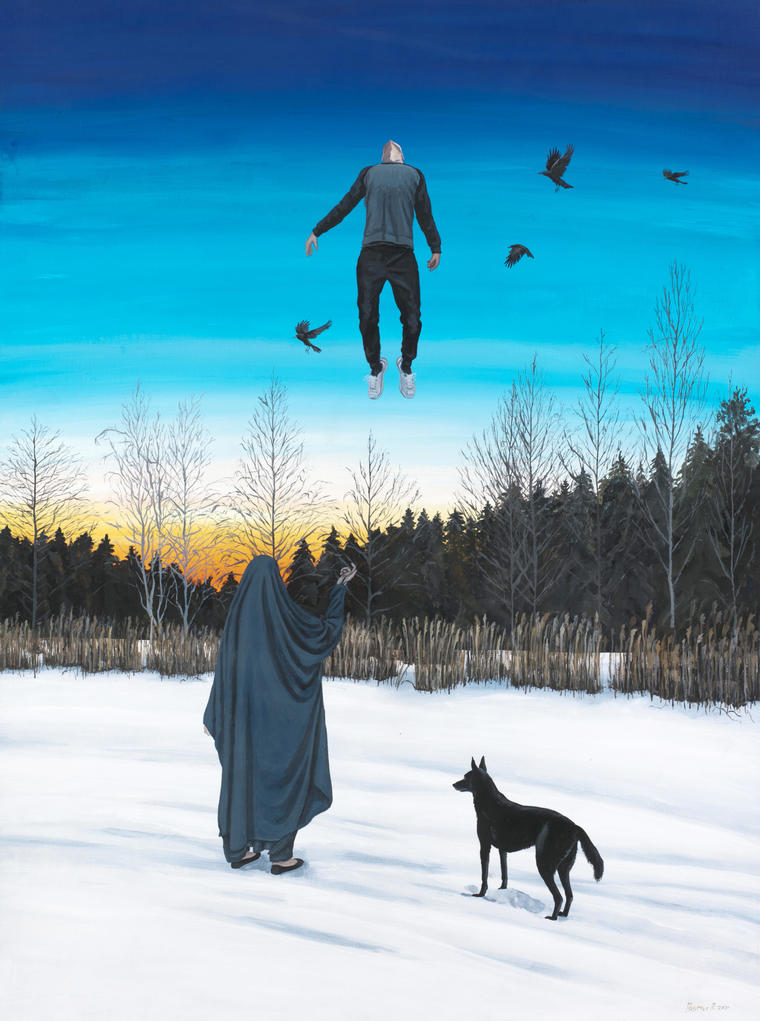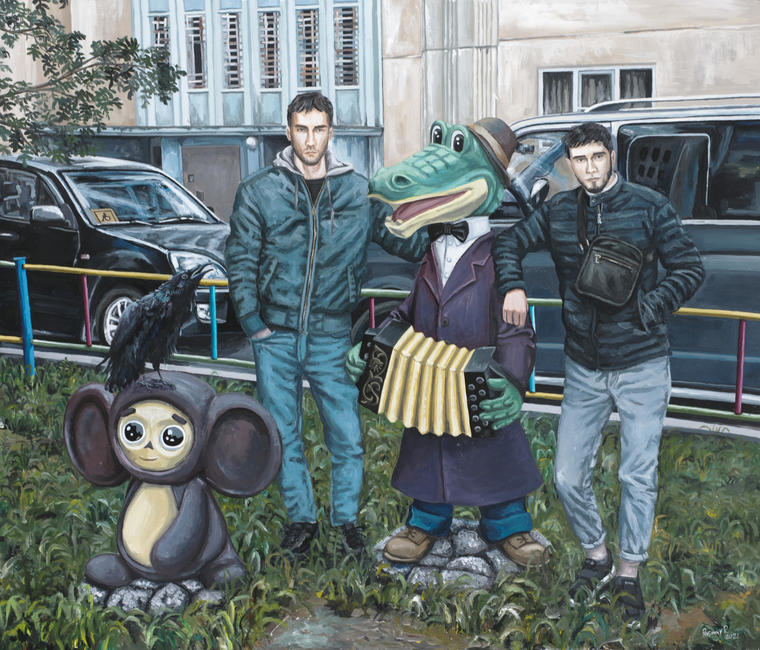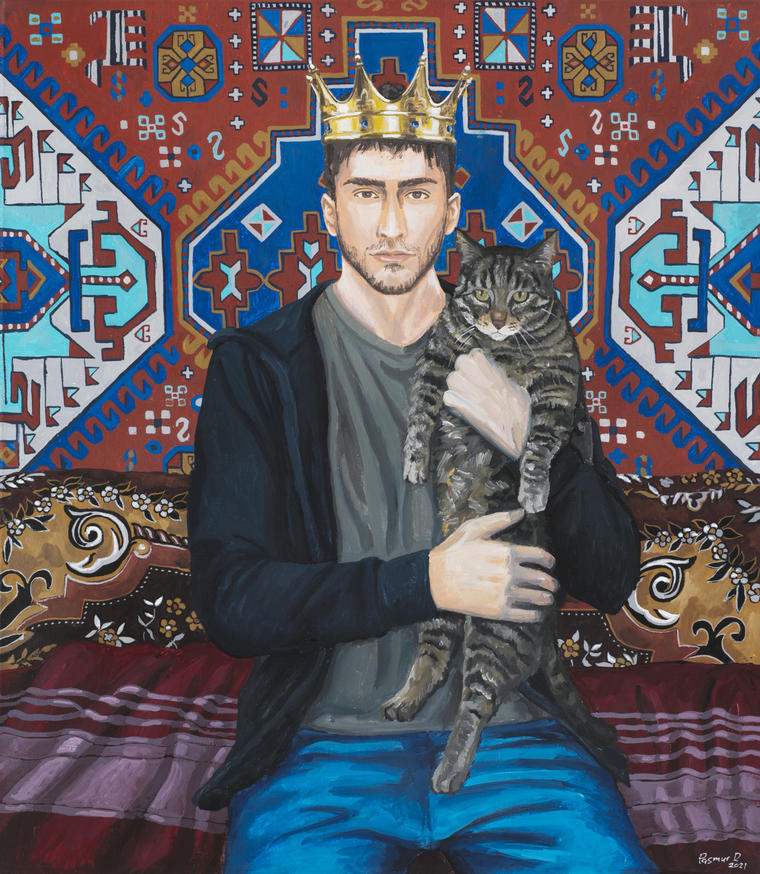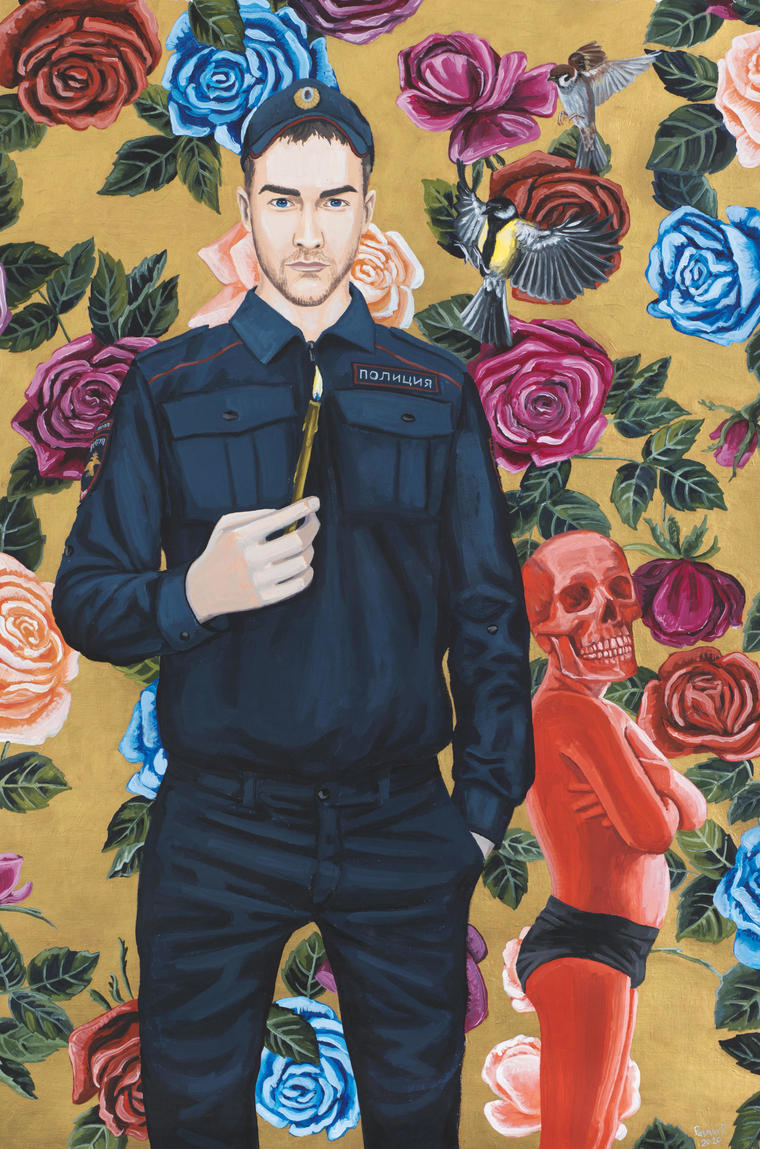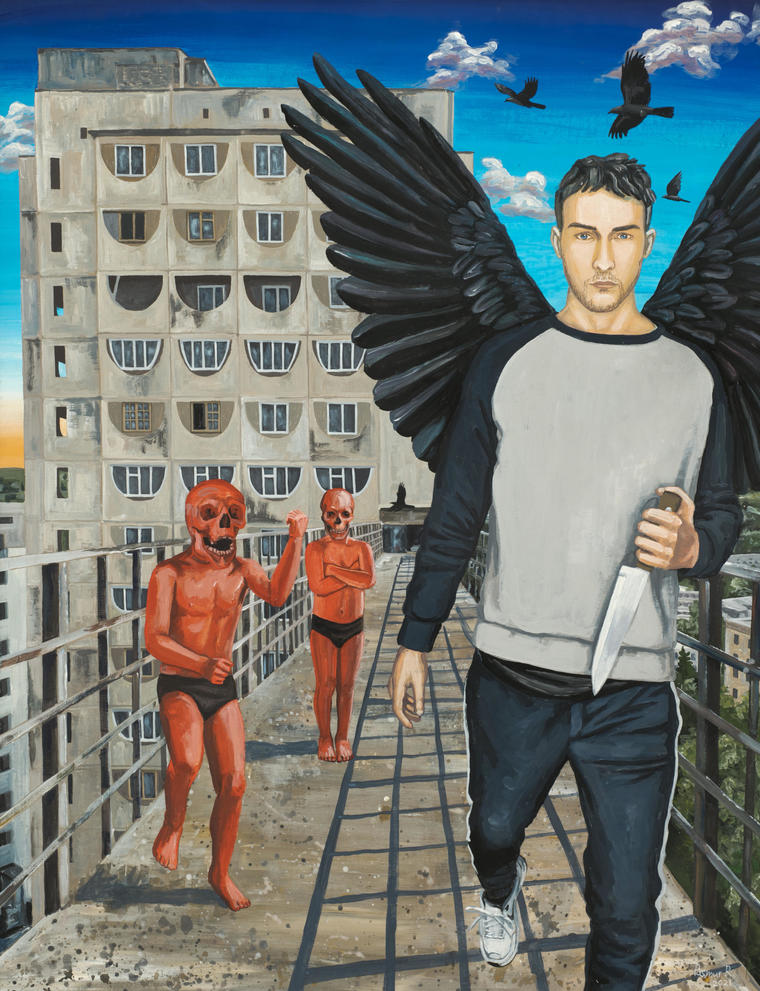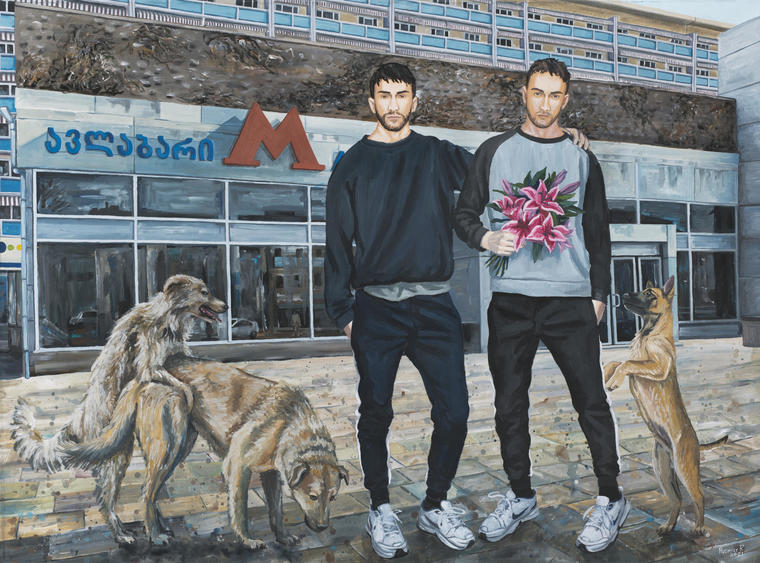
Pasmur Rachuiko
Untitled
VLADEY presents Pasmur Rachuiko' solo exhibition "Untitled".
Working hours: 19th October–4th November, Mon-Sun from 11AM to 8PM
VLADEY Space
Pasmur Rachuiko was born in Rostov-on-Don, then studied in St. Petersburg, and currently resides in Tbilisi. The artist's practice is usually characterized as "naive surrealism": his canvases are inhabited with images born at the intersection of psychedelic fantasy and Russian reality. By creating those, the artist seeks to find his own place in the world and figure out the triggers of the modern generation. Policemen, dwellers in tracksuits, angels, women in burqas, red skull-headed figures – Rachuiko creates the pantheon of characters with their own storylines or, as the artist states, the "endless epos". To prehend the exhibition within VLADEY Space as a single narrative or to embrace singular stories in each canvas, the decisive word here rests with the viewer.
To create a pseudonym, the artist turned to Slavic mythology and chose the ancient name "Pasmur", which translates as "gloomy". He often endows his own features with the heroes of the works, placing self-portraits in scenes with police officers and townsfolks. When creating paintings, Pasmur Rachuiko adheres to the auteur iconography, influenced by Renaissance and German romanticism. The artist embraces the humanistic pathos of the old masters, building a unique narrative in his works, bringing the person and their character to the fore. At the same time, being an autodidact, he uses profaneness as one of the methods and forms a composition of saturated images with often unrealistic perspective and no generic light source, creating the effect of collage.
In some works, the images appear to be inscribed in composition traditional for Renaissance — a triangle, which connects Pasmur's canvases with picturesque images of Catholic saints of the Italian golden age. However, inheriting icon-painting traditions, Rachuiko flattens the space within his works and creates a relatively linear composition: his characters are depicted in frontal view, looking directly at the viewer, their faces resembling the icons.
Among the postmodern art trends, Pasmur Rachuiko highlights Socialist Art. Just like the pioneers of the Soviet alternative culture combined the images of official "permitted" art with mass aesthetics, Rachuiko combines the motives and techniques of old art with recognizable, sometimes hypertrophied, images of the contemporary. However, Pasmur's art does not condemn but only captures and represents the surrounding reality in the form it appears to the artist himself. During the process called by the author "aesthetic processing", the critical phenomena of today embodies oneself into symbolic images.
Without giving the images an unambiguous interpretation and leaving most of the works and the exhibition untitled, Pasmur Rachuiko calls freedom from any restrictions his fundamental principle. However, his art appears to be a game, planned to the smallest detail, with the rules known only by the artist. Combining his constant heroes in different ways on canvases, he sometimes changes only their poses and models of interaction. The repetitive images seem to hypnotize, turning the mysterious and seemingly alienated world suddenly familiar, evoking a spiritual response and warmth. Pasmur Rachuiko reveals the contradictory versatility of both the artistic world and the real one, allowing the viewer to take a different angle on today's agenda.
